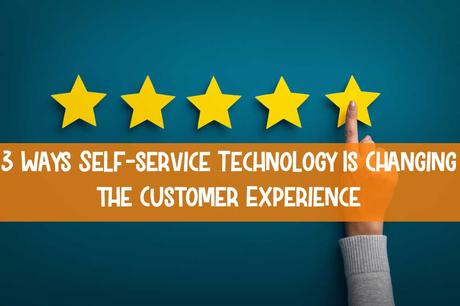Customer service is a necessary component to grow and sustain a business in this ever-increasingly competitive market. Whether you're managing a small business or a large corporation, every business entity needs to serve customers in the best way they can.
Despite the challenges of providing the best customer experience, modern technology has helped business leaders in terms of offering quality customer service . These benefits range from improving communication channels, speeding up work processes, and making things efficient and cost-effective.
One example is companies that allow your business to outsource accounting services . They use advanced financial technology tools to ensure accurate data management, automate data processing, and develop computerized systems to record and process financial transactions.
Apart from the emerging business technology tools, self-service technology is becoming more common, not only in the banking sector but also in restaurants, retail, and other business enterprises. While this technology involves a huge investment, many entrepreneurs are considering their options of whether to adopt a self-service technology for their business.

Improves Customer Experience
Today, the millennial and Gen Z population are increasingly driving the consumer demand in every industry. These two generations grew up alongside technology and expect it to be available whenever possible.
One of the most common benefits of self-service technology is to make the customer experience easier by offering newer methods to access services and products. For example, self-service kiosks in fast-food chains allow customers to order exactly what they want in a few clicks.
Self-service kiosks are digital 'order takers' at cafés, restaurants, and food establishments. These tools eliminate the waiting time for customers instead of standing in long lines to wait for their turn. This is perfect for those who struggle with placing orders in front of the counter. Using the self-service kiosk, a customer can customize their order at their own pace.
Supermarket kiosks are another form of self-service technology that seeks to improve customer experience. Self-service checkouts are efficient tools that allow customers to scan and pay for their grocery items. Companies can also provide language options to accommodate foreign customers. They can also include other features based on the services they offer.
Opportunity for personalization
The main principle of self-service technology is to empower the user to do things on their own. The ability to control and access information increases customer satisfaction, whether by ordering a movie ticket, doing a bank transaction, or checking out an item.
An intuitive self-service platform brings opportunities for personalization by helping customers repurpose and remember their previous activities. For example, a customer accessing a self-service platform can double-check the services or products they previously purchased and access options relevant to them.
One of the great appeals of self-service technology is it transfers the data management to the customer and allows them to customize their choices. Customers like it when a company doesn't treat them like any other customer, but someone who they value. This will give them a 'wow' moment, which enhances the customer satisfaction levels.
Providing customers with self-service options allows them to learn new digital skills. Aside from helping them solve a problem, businesses should also provide tools to help them solve it. Some websites include FAQ sections with detailed procedures about different troubleshooting. They include screenshots, images, audio, and video files to guide the customer to reach a certain solution.
This enhances the customer experience by providing more than just a service or product. Basically, a self-service tool becomes a way to expand their knowledge and skill set.
Enhance productivity
Self-service technology takes out the frustration from customers and staff by offering fast and convenient ways to transact. This allows employees to devote more of their time to other meaningful tasks to grow the business.
For example, reaching out to customer service lines is particularly tricky, especially if the company has a very limited workforce. With limited staff to answer inquiries, customers have to wait for several minutes before someone answers their call. This wastes a great deal of time on the customer's end, which can affect the company's reputation in terms of providing services.
Chatbots are a great example of self-service technology companies are now using to respond faster to customer queries and feedback. This allows the business to experience faster connections with their customers and provide them with needed information or service at a quicker pace.
Self-service technology has been a long-overdue innovation that requires more attention, more than ever. In this fast-paced digital world, entrepreneurs need to keep up with the changing times and provide quality service according to consumers' changing demands.
